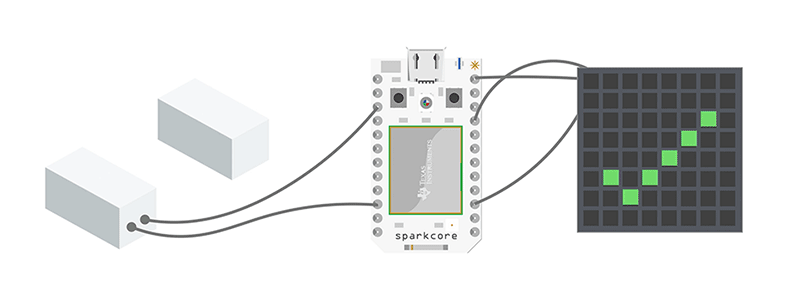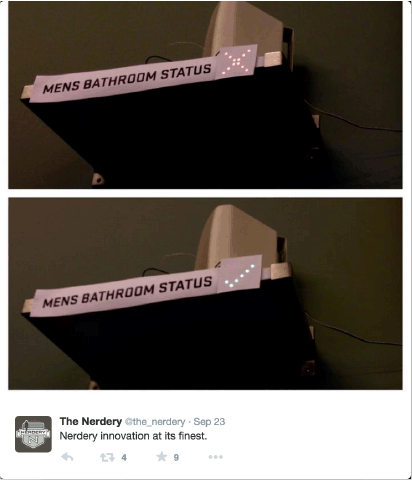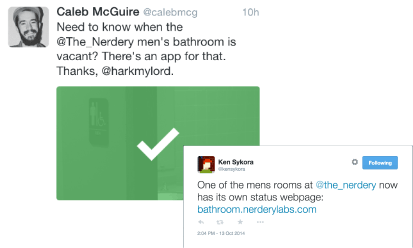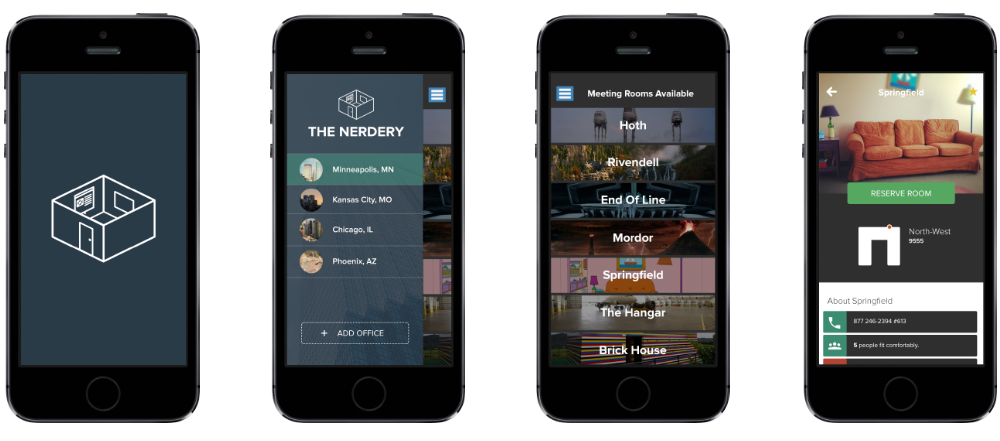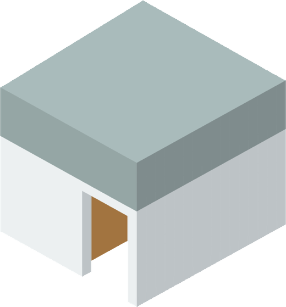
The problem to solve
Have you ever had to sit near a public bathroom? Even when flying it's uncomfortable to see people loitering around waiting for it to open, it breaks your concentration. A friend at The Nerdery sat near the only private bathroom to be shared among 60+ employees nearby. It's the best seat in the house if you're uncomfortable pooping in public due to the privacy in this spot. Being at a company called The Nerdery, it was a popular bathroom for a stereotypically introverted culture. We wanted to help cut down on peoples failed attempt to use this bathroom.

